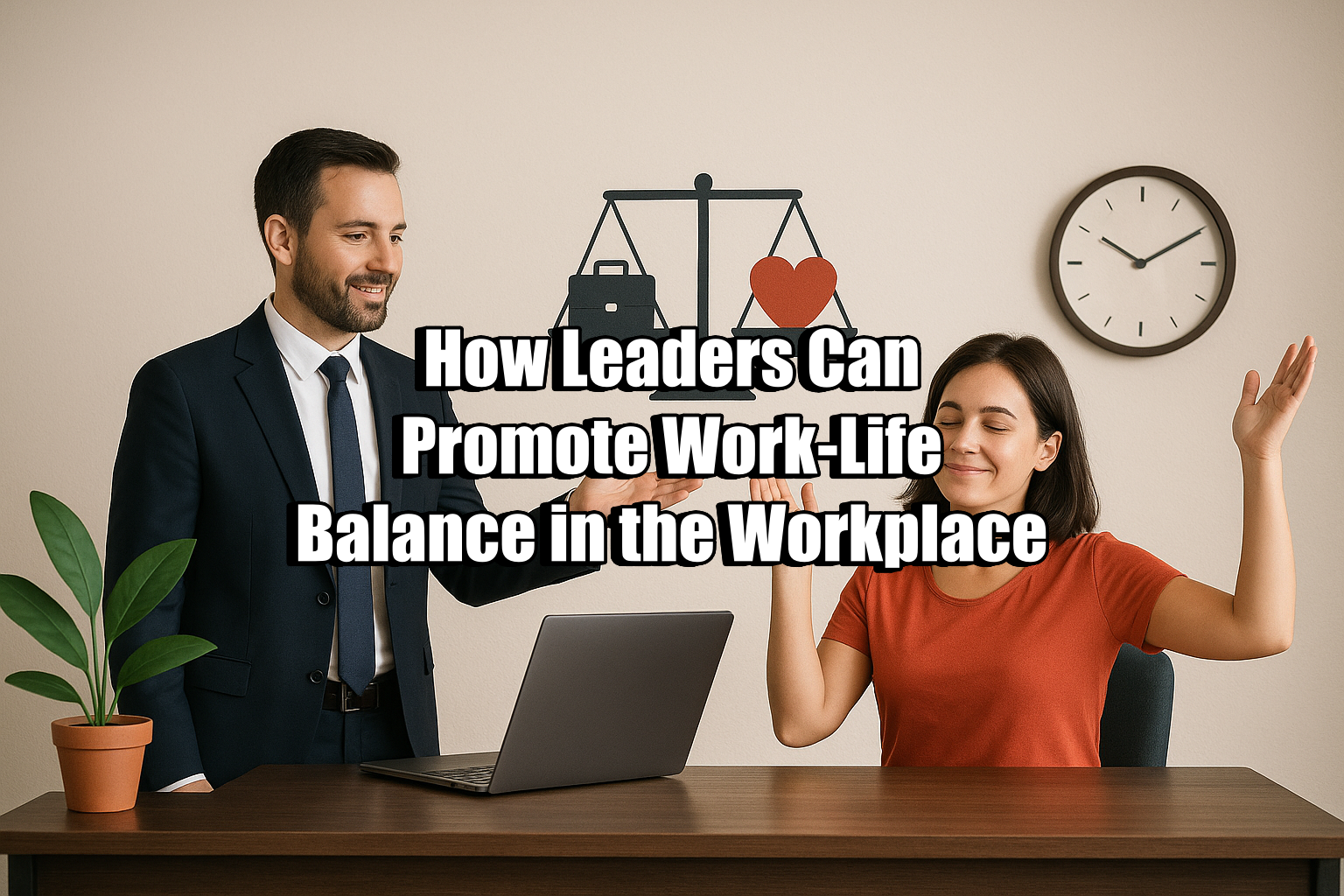How Leaders Can Promote Work-Life Balance in the Workplace
Work-life balance is no longer a “perk” — it’s a necessity. In today’s fast-paced, hyper-connected world, employees are juggling professional demands with personal responsibilities, often at the expense of their health and well-being. Leaders play a critical role in shaping a culture where balance is respected, encouraged, and actively supported.
Why It Matters
A healthy work-life balance leads to higher productivity, lower turnover, and stronger employee engagement. When team members feel valued as whole people — not just as employees — they bring more energy, creativity, and commitment to their work. Leaders who prioritize this balance not only boost organizational performance but also foster long-term loyalty.
Strategies Leaders Can Use
1. Set the Tone at the Top
Employees look to their leaders for cues. If managers send late-night emails, skip vacations, or consistently overwork, the team is likely to follow. Modeling healthy boundaries is one of the most powerful ways to show that balance is respected.
2. Offer Flexible Work Options
Hybrid schedules, remote work opportunities, and flexible hours give employees the ability to better manage their time. When people can align their work with personal commitments, stress decreases and performance improves.
3. Encourage Time Off — and Respect It
Leaders should actively encourage employees to take vacation days, personal time, and breaks during the day. Equally important: respecting that time by not expecting availability when someone is out of the office.
4. Focus on Outcomes, Not Hours
Instead of measuring success by time spent online, shift the focus to results. Trusting employees to deliver quality work — rather than micromanaging — empowers them to organize their day more effectively.
5. Provide Resources for Well-Being
Offer access to wellness programs, employee assistance services, or stress-management workshops. These resources signal that the organization values not just productivity, but also the overall health of its people.
6. Listen and Adapt
Balance looks different for everyone. Regular check-ins and anonymous surveys help leaders understand employee needs and adjust policies accordingly. Creating a feedback loop ensures initiatives remain relevant and effective.
The Bigger Picture
Work-life balance isn’t just about keeping employees happy — it’s about building sustainable organizations. A culture that prioritizes well-being reduces burnout, improves retention, and attracts top talent. Leaders who embrace this responsibility create workplaces where people thrive, both professionally and personally.

No responses yet